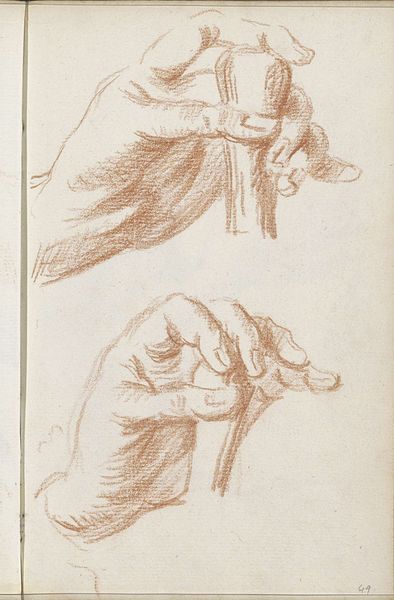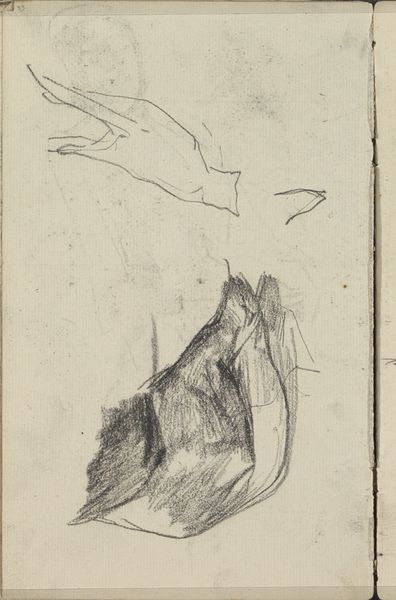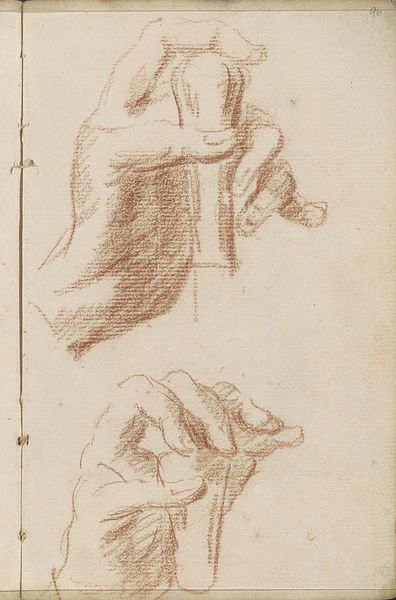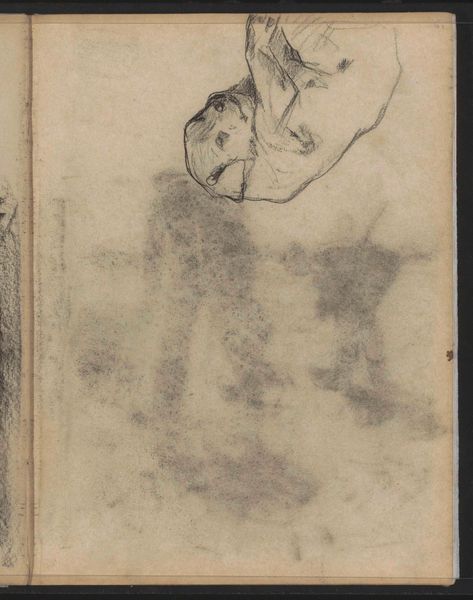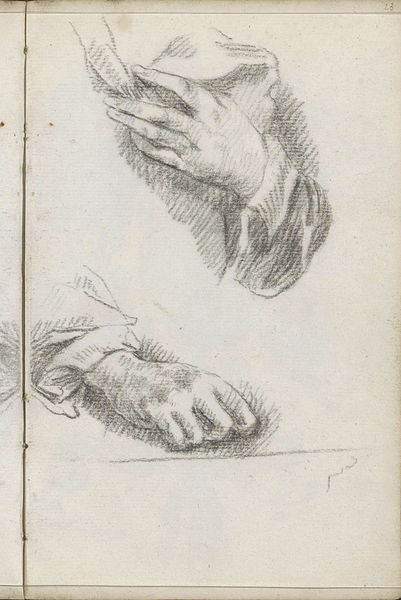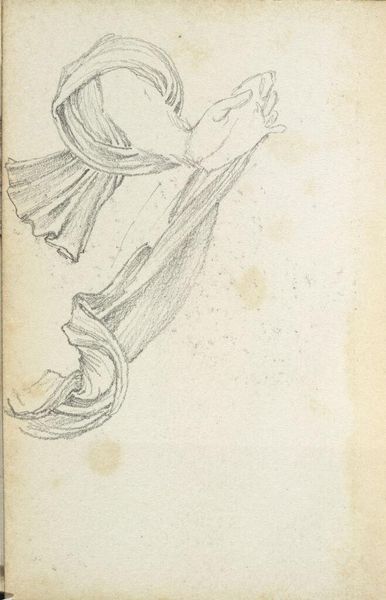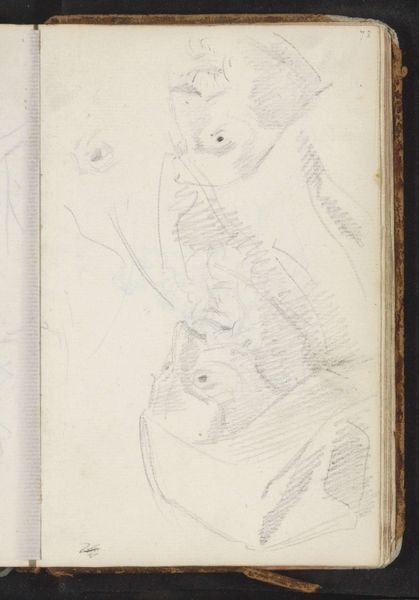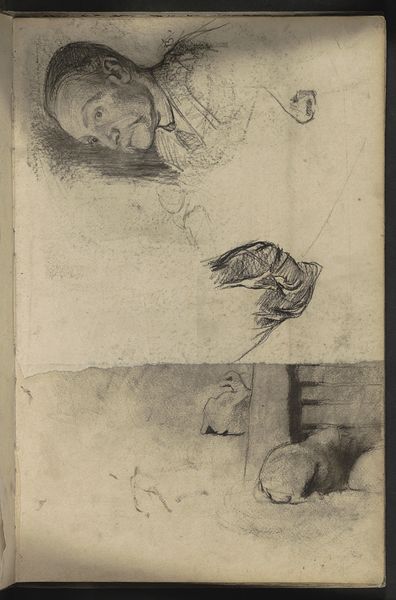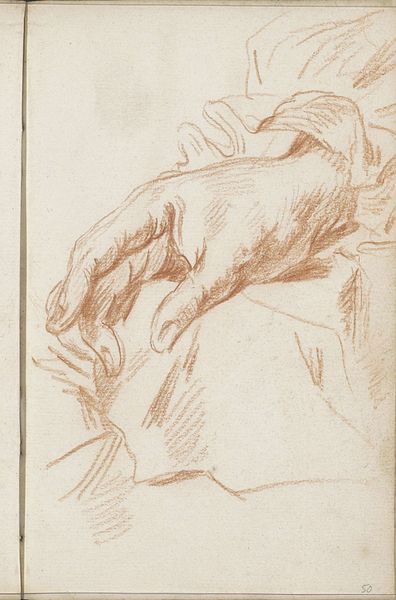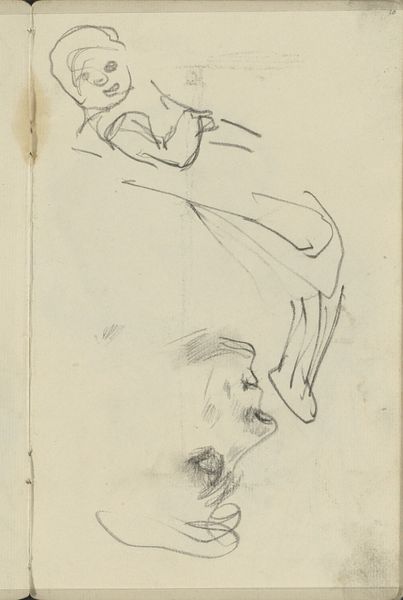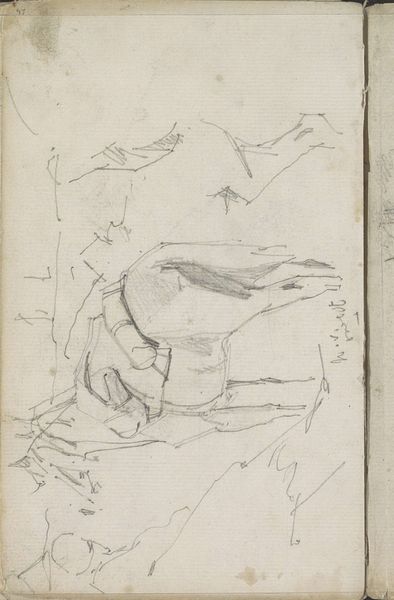
drawing, pencil
#
portrait
#
drawing
#
baroque
#
pencil sketch
#
figuration
#
pencil
Copyright: Rijks Museum: Open Domain
Editor: Here we have "Twee handen" or "Two Hands" by Petrus Johannes van Reysschoot, dating back to sometime between 1710 and 1772. It's a pencil drawing, and I'm struck by the delicacy and precision, especially considering it’s "just" a study of hands. What story do you think this sketch tells, particularly within its historical context? Curator: That's a perceptive observation. In the Baroque era, studies like this weren't just about skill; they reflected a system of artistic training deeply embedded in social hierarchies. Think about the guilds: Mastering anatomy, capturing gestures – these were markers of status, paths to upward mobility for some, but deliberately limited to others. Do you notice how the cuffs are depicted? Editor: Yes, they look quite detailed. Curator: Exactly. This isn't just about representing hands; it's about representing *someone's* hands, someone likely of a certain social standing. The ruffled cuffs, rendered with such care, speak to societal markers of wealth and status that permeated even the "humblest" of sketches. Consider how the art world and its institutions, from academies to patronage systems, reinforced and perpetuated social norms through the imagery they produced and valued. How does that affect your reading of the sketch now? Editor: That is fascinating. So it’s not simply a technical exercise, but a visual representation of class. I’m now wondering about the model: Who were they? What was their relationship to the artist? Curator: Precisely! These are the questions that help us move beyond aesthetic appreciation to understand art as a product of specific social and political forces. Editor: This has really made me reconsider the power dynamics embedded even in seemingly simple artworks. Thanks for sharing this lens. Curator: My pleasure. Remember, art doesn’t exist in a vacuum, it is actively shaped and also shapes our understanding of history.
Comments
No comments
Be the first to comment and join the conversation on the ultimate creative platform.
